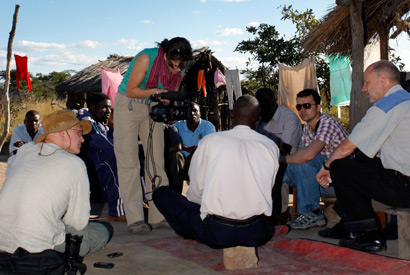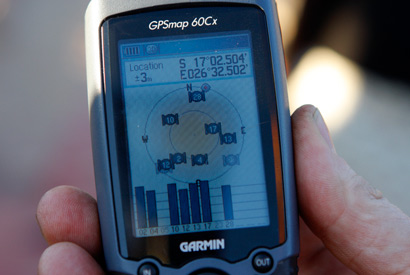
Meeting the Simakakata community for the first time
Our NGO partner in Kalomo, Response Network, has helped us hit the ground almost faster than we can keep up. Within minutes of arriving in the town, we were taken to meet the local government representatives for the Department of Education.
Straight after leaving their office, we were taken to the community of Simakakata. It’s hard to believe that poverty like this still exists in the world, nor that it’s borne with such grace and warmth. Just a few kilometres from Kalomo, Simakakata is not so much a village, more a large geographical area of scrubland and cornfields peppered with tiny two or three hut clearings. It’s home to around 960 households, which is approximately 5,000 people.
At the moment, the school uses a dilapidated farmhouse as its temporary shelter. The building’s foundations are crumbling and few of the windows have glass. The nearest borehole is privately owned. Often, the community are turned away and forced to walk several kilometers to a source further away.
The children walk for up to 7km to start the school day at 7am. Its Headmaster, George Matantilo, is a government trained teacher, and has a staff of five, three of whom are volunteers from the local community.
In October, they were asked to leave as the building had been acquired another organisation. Fortunately, they have yet to take possession.
George’s school is exactly the kind of project LearnAsOne wants to support. He’s determined that any investment received from donors will be used to kickstart sustainable projects that the community can take on, own and maintain in the long run.

Volunteer Nerys gets a hand in the editing suite
In the last few months, the parents of his pupils have crafted 60,000 bricks to build their new schoolhouse. What they still need is materials for roofing, doors, foundations and cement, which they can’t manufacture themselves.
“Building is quicker now after the rainy season because we have food,” he says, pointing to the maize drying in the sun behind him. “Otherwise, everyone is too hungry.”
Why is a school important to a community who can’t even feed themselves the whole year round?
We asked one of the parents involved in the brick making project, Charles Sanjelele. He has lived here for 11 years, and has seven children between the ages of 17 and 4. They all attend classes at George’s schools. One day he hopes they’ll all leave the community and get jobs in the larger towns.
“To be educated is very important to us. If you can’t read,” he says, “Life is hard. It’s easier to get things done when you can read.”

GPS co-ordinates at the centre of the village square



1 comment
Leave a comment >
Keep up the good work people, this is inspirational….
Martin